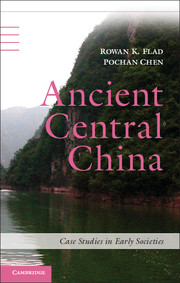Book contents
- Frontmatter
- Contents
- Figures
- Tables
- Boxes
- Acknowledgments
- 1 Introduction: Centers and Peripheries in the Ancient Yangzi River Valley
- Part I Setting the Stage
- 2 The Environment of Central China
- 3 Historiography and the Topography of Research: A History of Archaeology in Central China
- Part II Political and Cultural Topographies
- Part III Topographies of Economic Activity and Ritual
- Glossary
- Bibliography
- Index
3 - Historiography and the Topography of Research: A History of Archaeology in Central China
Published online by Cambridge University Press: 05 February 2013
- Frontmatter
- Contents
- Figures
- Tables
- Boxes
- Acknowledgments
- 1 Introduction: Centers and Peripheries in the Ancient Yangzi River Valley
- Part I Setting the Stage
- 2 The Environment of Central China
- 3 Historiography and the Topography of Research: A History of Archaeology in Central China
- Part II Political and Cultural Topographies
- Part III Topographies of Economic Activity and Ritual
- Glossary
- Bibliography
- Index
Summary
Introduction
Archaeology is the systematic study of material remains to reconstruct patterns of past human activity and to understand why such patterns emerged. Archaeologists rely heavily on the contextual relationships among various aspects of the material record of the past. Context provides clues that are not inherent in material remains themselves but that nevertheless contain information about past human behavior. An explicitly archaeological approach to the past, involving a systematic focus on context, emerged in the nineteenth century, although its intellectual roots can be traced to much earlier times (Trigger 2006; Willey and Sabloff 1993).
The origins of archaeology as an academic discipline in different geographical regions vary considerably owing to the social contexts surrounding intellectual life and the ways in which ideas about the past have been made relevant to the present. A topography of archaeological historiography (the history and development of archaeological research in a region) highlights areas where research has been concentrated or ignored. In Chinese archaeology, Central China occasionally contained areas of intense archaeological focus, but, more frequently, it was overlooked as a region peripheral to historical narratives. Within Central China, areas that have received the most attention consequently provide the majority of available data. The historiographical topography of Central China therefore fundamentally affects the way we understand multifaceted landscapes in antiquity.
- Type
- Chapter
- Information
- Ancient Central ChinaCenters and Peripheries along the Yangzi River, pp. 43 - 66Publisher: Cambridge University PressPrint publication year: 2013
- 1
- Cited by



